Ferdinand Porsche was the third child of the tinsmith Anton Porsche and his wife Anna. His parents house was in a bohemian village Maffersdorf close to Reichenberg. His father was a firm believer in a strict Victorian upbringing and obedience was the order of the day for all 5 children.
After the unexpected death of his brother Ferdinand Porsche's future career was virtually decided - he too should become a tinsmith and one day take over the family business. However in spite of his tender years, he was 14 at the time, young Ferdinand had quite different ideas than his father.
Ferdinand was a great experimenter, and much to the annoyance of his father not with things which had anything to do with a tinsmiths trade, but with electricity, which at that time was in the process of being commercialised. His father forbad this dabbling about and Ferdinand beat a hasty retreat to the attick where he could carry out his experiments in peace.
When he was 16 years old he caused a minor sensation. While his father was away for a few days on a business trip, Ferdinand installed electricity in the whole house. Imagine his fathers suprise when he returned home to find the house ablaze with light. It was the only building in the whole village, apart from the local carpet factory, to have electric light. From that moment on Anton Porsche was convinced of his sons ingenuity, and in 1893 he let his son enter into an apprenticeship with Vereinigte Elektrizi-tätswerke Bela Egger & Co. in Vienna.
The Jacob Lohner Epoch Making Novelty
Four years later he started to work for the Jacob Lohner Imperial Royal Court Coach Factory in Vienna that had just established a department for electric coaches to keep up with the times and to satisfy the growing interest of the upper class for cars of this type. However because at this stage petrol engines were extremely noisy and unreliable Lohner preferred to use a battery drive.
Ferdinand Porsche designed a car for Lohner which at that time was absolutely unique. It was presented at the Paris Exhibition in 1900 and caused a sensation. One report spoke of "...the Epoch making novelty does without gears, belts, chains, differentials etc. It's the first car without a transmission. This has been made possible by the Porsche electric engines which are installed in the hubs of the front wheels and provide front-wheel-drive".
The hub engine which Porsche had designed for Lohner became a catchword at that time and very quickly made the 25 year-old Porsche famous in the motoring world. We come across the same hub idea not only in the 1900 racing cars but also in fire engines, trolley-busses, and at a later date in the heavy mobile generator units for artillery in the first World War. At the age of 30 Ferdinand Porsche went in 1906 as technical director to the Austrian Daimler Engine Company.
The First Petrol Electric Hybrid
It was here that he further developed the new drive principle. He developed petrol/electric mixed cars, where the petrol engine would drive a dynamo which passed on current without gearing to the hub engines. Ferdinand Porsche was not only a good craftsman who put things right when they didn't turn out to his satisfaction, but he was also a brilliant car driver.
In September 1900 he drove an electric car along the simmering mountain course and set up a new record. At the Axelborg races in 1901 he won the class for cars under 1000 kg., and at the imperial manouveres in 1902 he served in the reserve infantry of an elite regiment as driver the archduke Frans Ferdinand (Karl Ludwig Josef von Habsburg-Lothringen).
Driving The Archduke
He drove the archduke in a car of his own design, for which he received a note of thanks in the personal handwriting of his Imperial and Royal Highness. One of his biggest successes for Austrian Daimler was in 1910 - at that time one of the best known endurance tests was the Prince Henry course, named after the car driving enthusiast Prince Henry of Prussia. An Austro-Daimler team took part in this race in 1909, and the technical director Ferdinand Porsche sat at the wheel of one of these cars, going on to win the Silver Badge of Honour. But he wanted still more, he wanted the overall victory.
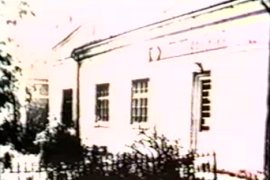
The Porsche Family Home in Maffersdorf...
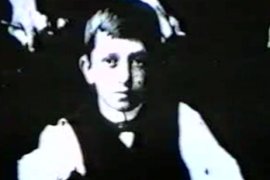
As a child Ferdinand Porsche demonstrated an uncanny ability to experiment...
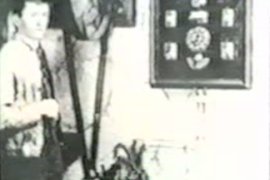 At age 16 Ferdinand Porsche ran electric lights throughout the family home... At age 16 Ferdinand Porsche ran electric lights throughout the family home...
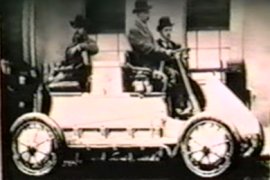
In 1897 Ferdinand Porsche joined the Jacob Lohner Imperial Royal Court Coach Factory in Vienna...
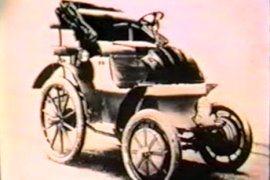
Ferdinand Porsche's first design was displayed at the Paris Exhibition in 1900, and featured no transmission...
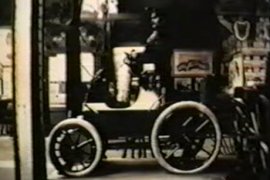
The hub engine which Porsche had designed for Lohner became a catchword at that time...
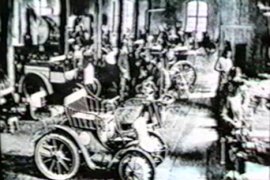
Demand for the electric hub-driven Lohner cars were unprecedented, given the noisy and unreliable nature of petrol engined versions...
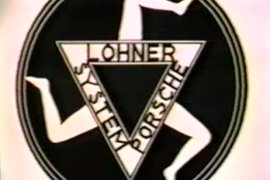
So successful was the electric hub engine that the Porsche name became well known...
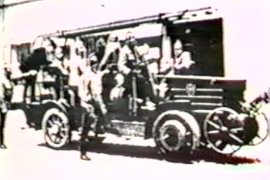
The hub engine was not restricted to use on cars, indeed it found its way onto fire engines...
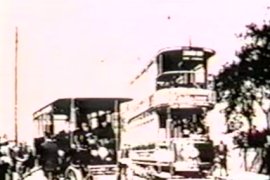
and trolley-buses...
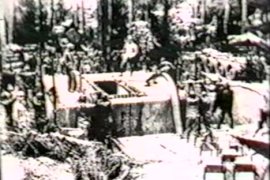
and heavy mobile generator units for artillery in the first World War..
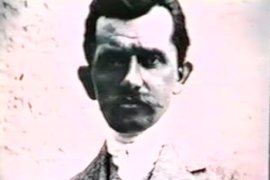
At the age of 30 Ferdinand Porsche went in 1906 as technical director to the Austrian Daimler Engine Company...
|
| Click here to continue the Pictorial Edition of "The House Of Porsche"... |
He then immediately designed the car for the Prince Henry course for the following year, and his wish came true. In 1910 his Daimler was placed first, second and third in this event with Ferdinand Porsche at the wheel of the victorious vehicle.
He had given the car a so-called "Tulip" shape - the forerunner to the streamlined car. Ferdinand Porsche often took part in races and often tried and tested his new models at such events. Yet he remained the best and most severe critic of his own designs.
A Daughter Louise and Son Ferry
In 1903 Ferdinand Porsche married, and in 1904 his daughter Louise was born. And five years later in 1909 his wife gave birth to a son, Ferdinand Anton Ernst, called Ferry. It was on the eave of the First World War - at that time Ferdinand Porsche was not only involved with car construction but also the designing of airship and aircraft engines and generator units for artillery.
The first Austro-Daimler aero engines were produced in 1910 and became well known throughout Europe. As early as 1912 Ferdinand Porsche designed an air-colled aircraft engine with 4 horizontally opposed cylinders and hanging valves - a design which basically corresponds to the later Volkswagen engine.
Development Of Unique Military Transports
It was for Skoda that Ferdinand Porsche designed the transporter for large 30.5 cm mortars, the engine had 100 hp and was able to move 24 tons. In the years 1915 to 1917 the so-called "C-Train" was developed under Porsche's technical direction, used for transporting 42cm howitzers.
It had iron wheels for street and rail use, all wheels being driven. It had a generator unit with 150 horsepower and Porsche once again used the mixed system for transmitting the driving power produced by the petrol engine to the electric engines in all the wheel hubs of the whole train.
Emperor Franz Joseph awarded Ferdinand Porsche the Officers Cross of the Order of Franz Joseph "in most gracious acknowledgement of outstanding services to the armed forces". He became managing director of the Austrian-Daimler factory and was awarded the title of Honourary Doctor of the Technical University in Vienna.
In 1921 Ferdinand Porsche developed a very small sportscar with 1100ci, and given the name "Sachsa". With this car Austro-Daimler came first and second in the special class at the
Targa Florio. From this time on Ferdinand Porsche was always a pioneer of the small car.
Success In Sicily Raises Porsche's Profile
In 1923 he went as Technical Director and Member of the Board to the Daimler motor company in Stuttgart. It was strangely enough through Sicily that he found favour and recognition in Stuttgart - he improved a racing 2 liter car with compressor to such perfection that the Daimler Works driver Christian Werner won the 1924
Targa Florio.
It was during the Porsche era that Daimler developed several of their well known vehicles, such as the S and SSK sports cars with compressor, large diesel trucks of astonishingly high performance, and laid the ground work for future aero engines.
After the merger with Benz things no-longer went so smoothly for Porsche at Daimler, and in 1928 he left to become head designer at Steyr. A Viennese newspaper wrote at the time "...one of the largest car factories in the world has succeded in landing one of the greatest designers in the world".
In 1929 the house bank of the Steyr company collapsed. After various arguments with the new finance people in the company, and although times were anything but easy, Ferdinand Porsche set up his own business in 1930, and opened a design office in Stuttgart.
Setting Up His Own Design Shop
In January 1931, he launched his consulting firm, 'Dr. Ing. h.c. F. Porsche GmbH Konstructionsburo Fur Motern, Fahrzeug, Luftfahrzeug, and Wasserfahrzeugbau' ('Motors, Vehicles, Airplanes, and Boats...').
The staff was composed of men with whom the Porsche had previously worked: Karl Rabe, chief engineer, was joined by Erwin Komenda (body design), Karl Frolich (transmissions), Josef Kales (motors), Josef Zahradnik (steering and suspensions), Francis Reimspiess, Han Mickl (aerodynamics), Adolf Rosenberger (business manager), and two relatives, Anton Piech (a lawyer, Ferdinand Porsche's son-in-law and later father of Ferdinand Piech, now chairman of Volkswagen), and Porsche's own son, Ferry.
Porsche's new team of engineers developed some extremely famous designs. Already in 1931 the Sundark company assigned Porsche the task of constructing a small car. Although only a few prototypes were developed the car had several things in common with the later Volkswagen Beetle.
The vehicle which Porsche designed for NSU in 1933 was almost identical in appearance to the Volkswagen Beetle, and was based on the same design principles. In parallel with his activities for NSU and without any firm contract Ferdinand Porsche and his team developed a racing car engine which was later taken over by Auto Union.
The Famous Auto Union V16 Racer
It was the 16 cylinder racing car with V-engine in the rear and with torsion bar suspension which Hans Stuck and Bernd Rosemeyer drove on all racing circuits in Europe and between 1934 and 1937 set numerous world records.
It was at this time in 1932 that something quite unusual happened, Ferdinand Porsche was invited to Russia to visit various vehicle, aircraft and tractor factories, and it was during this visit that he was offered the position of Chief Designer for the Soviet Union. However Ferdinand Porsche turned the tempting offer down.
In 1934 Porsche received a contract to design the Volkswagen. There were only limited funds available for the project because understandably the German car industry was not exactly enthusiastic about the idea of a "People's Car" which would compete with their own small and medium class vehicles.
Porsche therefore had to design the car on a shoestring budget, and the first prototypes were built by hand in his private garage in Stuttgart. After these prototypes had undergone extensive tests for over a year under all types of weather conditions a further 30 vehicles were produced in a Daimler-Benz factory in 1937 under the supervision of members of the Porsche team.
Development of the Beetle
These vehicles were driven millions of kilometres in the course of endurance tests conducted by the Porsche driving team. The 4th series of vehicles culminated in the Volkswagen Beetle as we know it today. In 1936 the decision was taken to build a special factory and city for producing the Volkswagen, the so-called "People's Car".
Ferdinand Porsche was awarede the overall contract for this assignment. Porsche had never been interested in politics, his one real interest in life was solving technical problems. The volume of design assignments increased to such an extent that Ferdinand Porsche was obliged to build a small factory in Stuttgart in which prototypes could be developed.
It was here that the designs for mini tractors with air-cooled diesel engines, aero engines and air-driven electricity generators with self-adjusting vains were developed and tested. Porsche also assisted in the design and construction of a series of tanks and military transport units.
Before the end of the war the offices and workshops of the Porsche company were transferred from Stuttgart to extremely primitive barracks. After the war Ferdinand Porsche was interned by the Americans and later arrested and imprisoned by the French for 22 months. In 1947, when he was released on bail, his health had suffered a great deal.
Ferry Resurrects The Company
In 1946 Ferry Porsche and a select group of colleagues took up the threads of the old operation. Ferdinand Porsche returned home to find the completed blueprints for a sports car and the Cisitalia waiting for him.
It gave him a great deal of satisfaction to see how his son and the old Porsche team had carried on his work in his absence. "I wouldn't have put one single screw in a different place" he said at the time. At the Geneva Motor Show for the first time in 1949 a car bearing the name Porsche was on display. The Porsche 356 was the first of many cars to make the name of its designers renowned throughout the world.
During his last years Ferdinand Porsche witnessed how his lifes work flourished and came to fruition. He was very moved the first time he saw thousands of Volkswagen Beetles on the streets. Ferdinand Porsche lived to see the beginnings of the Porsche company as we know it today, before he died in 1951 in Stuttgart at the age of 75.
During his life Porsche was able to realise a host of ideas and plans, but his with to become a centenarian because he still had so much to do did not come true. Ferry Porsche, his only son, then became head of the company. At that time the cars were still being produced in rented premises, but the resounding success of the 356 necessitated the construction of new factory buildings and a constant increase in the size of the working force.
Unprecedented Popularity Of The 356
The sports car which was originally designed to be produced in small numbers became extradinarily popular. The original 1100ci engine was constantly further developed. The name Porsche was already firmly established in the world of car racing, Porsche was a synonym for quality, performance and success.
In 1953 the 1500 RS Spider appeared, then the 550, the 718 and the RS60. This deep involvement in competition racing made a significant contribution in terms of ideas and improvements for production line models.
By
1954 5000 Porsche 356's
had been manufactured. By
1956 no fewer than 10,000, and by
1959 32 vehicles a day were being produced, and by 1962 Porsche clocked up 50,000 vehicles. During this period work was being carried out on a new model, the 911 that was designed to incorporate all the tried and tested features of the Porsche car.
The Iconic 911
This car with a 2.0 liter six cylinder engine developing 130 horsepower made it's debut in 1963 at the Frankfurt Motor Show. It was just the reverse of a mass-produced product, a superb sports-car combining classic symetry with perfectionist attention to detail. Later various derivatives based on the 911 were introduced, the T, S and E models. However the most significant addition to the 911 range was the Targa launched in
1965.
Here for the first time was a cabriolet with appeal and safety features which up till then had only been associated with true luxury cars , certainly not sports cars. From then on there was a 4 cylinder with the model designation 912 incorporating an improved version of the 356 C engine developing 90 bhp.
This was followed in
1970 by a 2.2 liter engine with mechanical fuel injection. By this time the next generation of Porsche's was working for the company. The oldest son Ferdinand Porsche was in charge of the design department, Peter Porsche was production manager and Ferry Porsche's nephew Ferdinand Piëch was responsible for development.
The Mid Engined 914
In
1969 a mid-engined sports car, the Volkswagen-Porsche 914 was introduced and offered either a 2 liter six cylinder engine developing 110 bhp or an 80 bhp 4 cylinder unit.
Both this model and the Porsche 911 were marketed by the jointly owned Volkswagen-Porsche Sales and Distribution company. In
1975 Porsche acquired Volkswagen's 50% of the equity and thus assumed complete control over the sales and distribution operation.
Porsche And The Race Track
People had repeatedly asked why Porsche is so active in the field of racing. When Ferry Porsche was asked this question he replied "... we don't take part in car races to gratify our own self esteem. On the contrary, we believe that car racing contributes and promotes the development of vehicle design. That's the reason why our prototypes and new designs are not just tested on our own proving grounds.
They are also tested in terms of their performance in comparison with the standards and achievements of their competitors on the race track.
Every single one of the cars we produce benefits from the experience on the race track". It has long been one of Porsche's policies in connection with car racing to always enter the best cars.
Ever since
1951 Porsche cars have established a reputation on the world's most famous racing tracks. Le Mans,
Targa Florio, Daytona,
Silverstone, Monza,
Nurburgring - and the list of Porsche drivers reads like an extract from the racing drivers who's who. Stirling Moss, Dan Gurney, Hans Herrmann, Richard Von Frankenberg, Jacky Iicks.
The list of Porsche racing cars is just as impressive, 904, 906, 910, 907, 908, 917 Carrera, Turbo 935 and 936. In
1969 Porsche won the manufacturers world championship for the first time. In
1970 their record was 9 wins from 10 races, including the grueling 24 hour Le Mans. In
1971 Porsche made a hat trick by winning the manufacturers world championship for the third time in succession.
Establishment of the Porsche Development Centre
In
1967 plans were drawn up for a development centre to cope with the numerous development contracts, an increasing amount of safety research projects and the heavy company involvement in racing events. The development centre outside Stuttgart was innaugerated in
1972. Only a small percentage of the development capacity was used for Porsche's own sports and racing cars, however it was obvious that Porsche's other customers were benefiting very directly from Porsche's experience with its own vehicles. After all, racing events were the acid-test for design and workmanship.
In 1973
almost 1000 people were employed in research and development.
1973 was also the year of the dream sports car - the Carrera with a 2.7 liter 210 horsepower engine, then Germany's fastest production sports car. It was a car destined to win many international long distance racing events, however the new turbo was the model 935, winner of the worlds manufacturer championships in
1976 and
1977 was based. In 1976 Porsche won the sports car world championships and Le Mans with the 936, a sports car designed and built in record time. And then in 1977 as further proof of reliability Le Mans.
Development Of The Long Life Car
These victories and good positions in international rally's such as Monte Carlo, East African Safari, Acropolis were again only a small part of the countless successes notched up by many private Porsche teams throughout the world. But Porsche was and continues to this day to be not solely preoccupied with car racing. Contempary problems such as the conservation of energy and raw materials have a very direct bearing on future car design. The idea of a "long-life" car was evolved in the Porsche development centre as a possible answer to the changing requirements in terms of longevity and construction materials for the next generation of cars.
In
1973 a model of the long life car was displayed at the Frankfurt International Motor Show. The results of the intensive development activities during this period could clearly be seen on models such as the Carrera 3 liter, the 911, the
1975 turbo and in features such as the zinc coated body pan and six year rust-free guarantee. The fast
1975 6 cylinder turbo put the crowning touch to a highly successful product line - a quiet safe sports car with extrodinary acceleration developing 260 horsepower in its niormal version and nearly 500 horsepower as a racing vehicle. It was a car which reflected the technological age better than any contemporary sports car.
The 924 and 928
In
1976 the 924, successor to the 914, went into production. The 924 offered amazing ride and road-holding making it one of the safest sports cars of its time. The secret to the cars on-road stability was found in the trans-axle system with front engine/rear wheel drive layout to ensure equal weight distribution. In the spring of
1977 the 928 was introduced and practically stole the show at the Geneva Motor Show. The 928 came with a 4.5 liter water-cooled V8 engine, trans-axle system and self-correcting axle. It represented yet another example of Porsche's ability to find new technical solutions to the delight of the motoring press and Porsche customers alike.
It was following the release of the 928 that a member of the Porsche board was quoted as saying "...We produce cars that nobody needs, but everyone wants to have". The perfectionist attitude of Porsche cars built in the 1960's and 1970's remains to this day, and is one of the reasons why the older cars remain so popular with collectors today. Not too many cars in the 1970's were built with a methodology of "longevity"...
Recommended Reading:
The House of Porsche - A Pictorial History
Ferdinand Porsche
Porsche Heritage
Porsche Car Reviews 